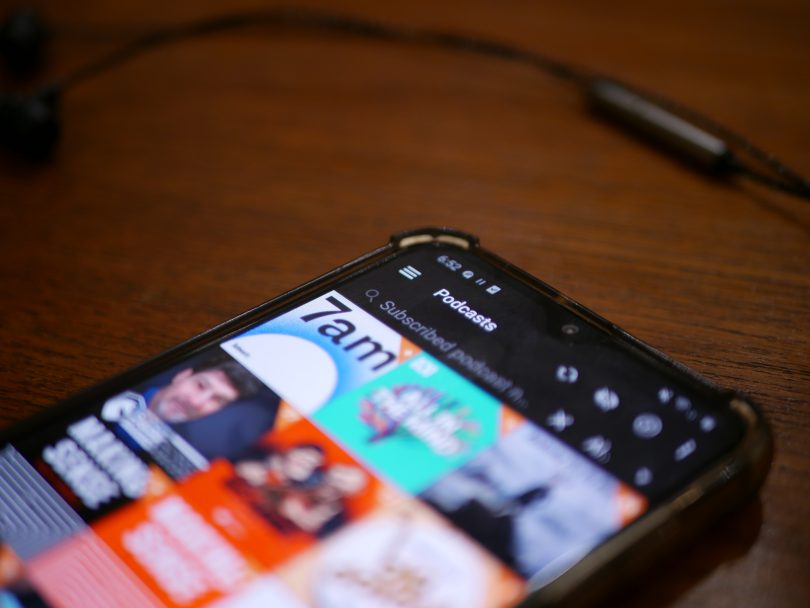ABC journalist Alex Mann talks about investigative journalism and audio storytelling.
Storytelling techniques of narrative news podcasts call for journalists to insert themselves into the story they’re telling more than ever before, resulting in more engaging and transparent journalism.
Since the term “podcasting” was coined in 2004, the boom of radio-on demand media has been well documented, with news podcasts making up just under a fifth (18%) of the most popular podcasts in Australia.
Research into news podcasts in 2019 found that established news media organisations’ podcast output was made up of two specific types of podcasts; already broadcast radio content, known as “catch-up programming,” and the far more popular “native” podcasts, which are made specifically for the podcast medium and heavily feature narrative storytelling techniques.
According to the same report, narrative news podcasts were one of the most popular sub-genres of native news.
The event of a global pandemic only saw podcast audience figures grow further.
Throughout 2020, hosting platform Acast reported a continual growth in the number of new podcast listeners each month, with the data showing an increase by 2.7 million listeners to news podcasts in Australia when the pandemic first peaked in February to May.
Investigative journalist and podcaster Alex Mann says journalists owe it to news podcast audiences to make stories entertaining.
“Audio should be engaging, it should be interesting, it should be gripping … even in the most grim stories, there’s moments of laughter,” Mann said.
In a systematic review of narrative journalism in 2019, Krieken and Sanders defined it as a genre of journalism “that employs the narrative storytelling techniques of voice, point of view, character, setting, plot, and/or chronology to report on reality through a subjective filter.”
As such, techniques of narrative news podcasts require the pushing aside of objectivity, traditionally one of the key tenets of journalistic work, to make way for a more interpretive and immersive approach to storytelling.
“Investigative podcasts should, like any piece of investigative journalism, aim to break news,” Mann said.
“But in terms of how a story is structured and where that news break is situated within the narrative of a podcast would be totally different to how it would be structured in a news piece – There’s no inverted pyramid in a podcast.”
Michael Hauge’s Six-stage structure, which is often used as a base in long-form investigative podcasts, shows how the compiling of a narrative news podcast can find journalists creating something akin to the format of a film.
But while the presentation of stories is far more cinematic in an audio format, the principles of long form storytelling are still news principles.
“It’s fact checking, it’s interrogating sources, it’s research,” Mann said.
“It’s being ethical in your approach to people and the treatment of their stories.”
In addition to cinematic structures that engage and explore what is being reported, audiences are also interested in who is doing the reporting.
“Because radio is such an intimate medium, it’s just you and the host … There is a bit more curiosity for who the person is behind the microphone,” Mann said.
“[Audiences] know that we’re a person with subjective views striving for objectivity, and if you include audiences in that process in strategic parts along the story then that can add to the overall look and feel of the story.”
Small moments of reflection, deliberation and explanation in journalists’ reporting are commonplace in narrative investigative podcasts, with broadcasters allowing audiences understanding of storytelling processes far more than stoic newsreaders of times past.
Mann says there is a line, and journalists need not make themselves central to the subject matter in order to effectively explore an issue.
“But there’s scope to include little pieces of yourself in these stories in a way that is editorially sound and relevant to the story,” Mann said.
With audiences increasingly demanding transparency of journalists and the journalism they consume, narrative news podcasts’ popularity will continue to grow as it offers both an engaging style and a deeper understanding for audiences of how stories are made.
Featured image: A smartphone rests on a wooden surface with the screen open to a podcast app search page.


